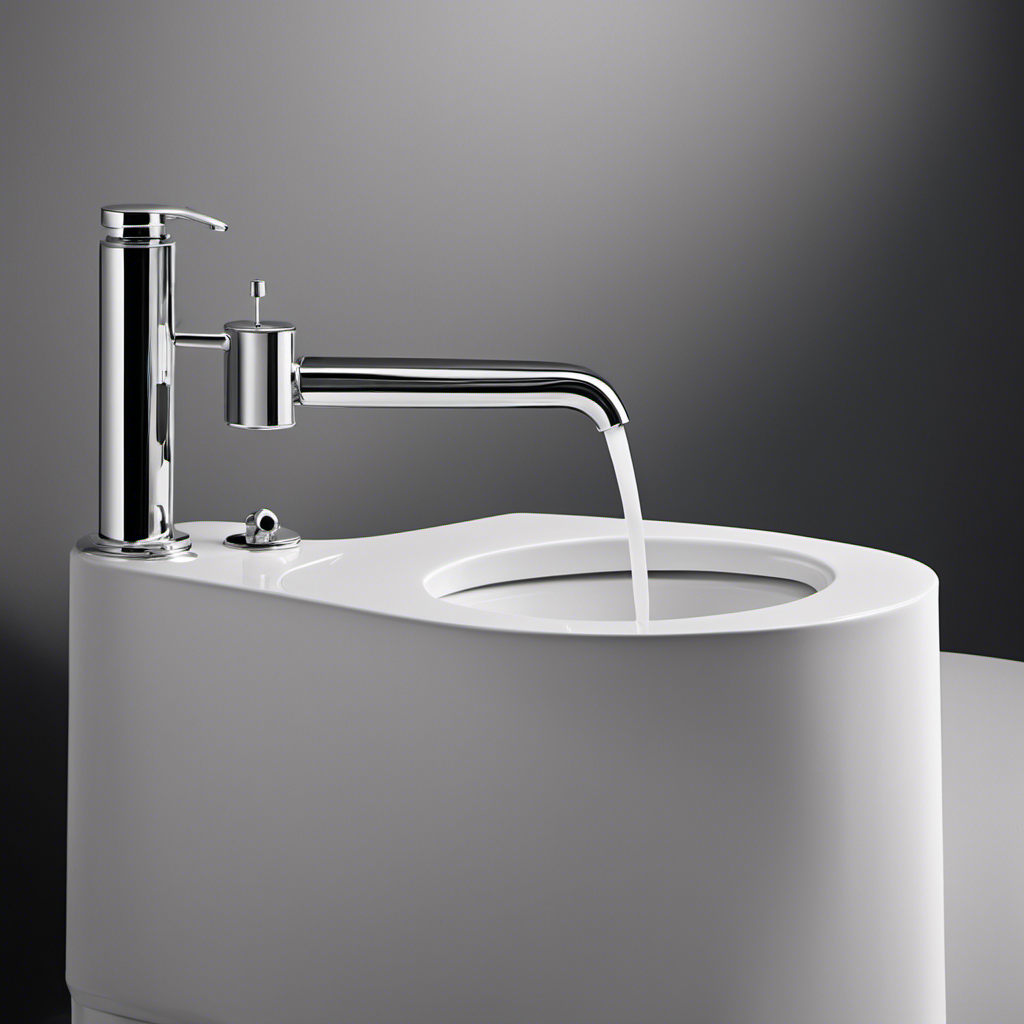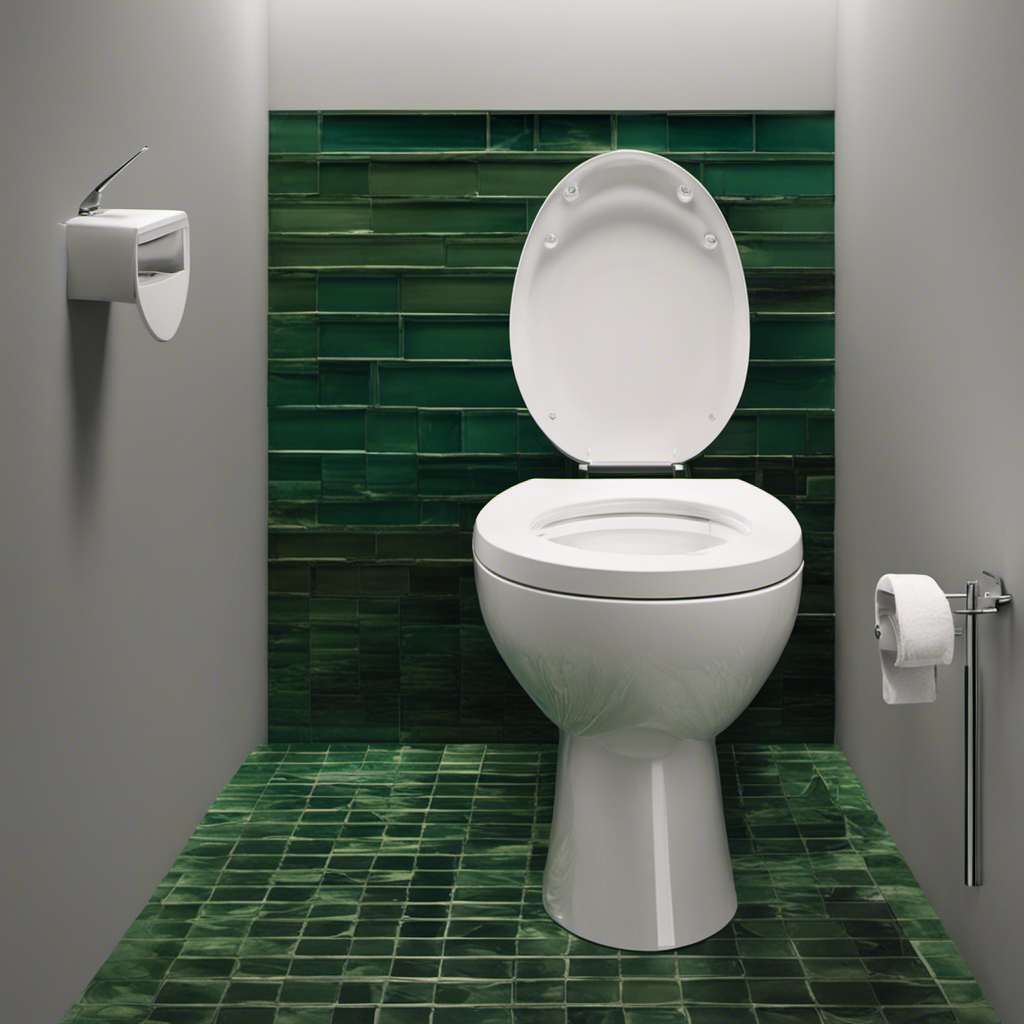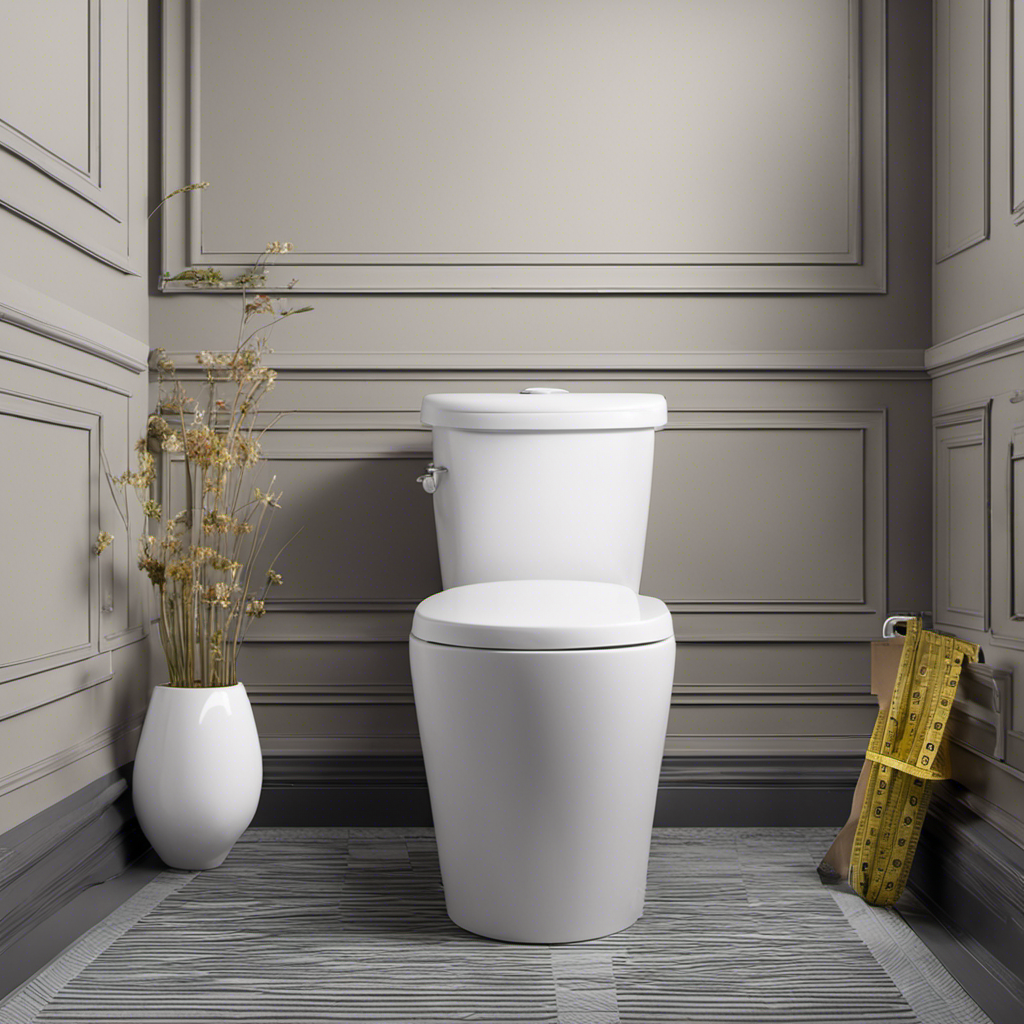Are you tired of the frustratingly fluctuating water levels in your toilet? Well, fear not, for I have the solution you seek!
In this article, I will guide you through the simple yet essential process of adjusting your toilet float. With a few easy steps and the right tools at hand, you’ll be able to achieve a perfectly calibrated float, ensuring a smooth and efficient flushing experience.
So let’s dive right in and conquer this pesky problem together!
Key Takeaways
- The toilet float controls the water level in the toilet tank.
- A malfunctioning float can cause issues like constant running water or improper flushing.
- Tools needed for adjusting the toilet float include an adjustable wrench, screwdriver, plunger, vinegar, and regular maintenance tools.
- Common issues with toilet floats include the float not rising, constant running water, water wastage, and environmental impact.
Understanding the Toilet Float
To understand how to adjust your toilet float, you need to know how it works.
The toilet float is a crucial component in the toilet tank that controls the water level. When you flush, the float drops, allowing water to flow into the tank. Once the water reaches a certain level, the float rises, shutting off the water supply.
However, if your toilet float is not functioning properly, it can lead to issues like constant running water or a toilet that won’t flush properly.
Troubleshooting your toilet float involves checking for any damage or debris that may be affecting its movement. Regular maintenance, such as cleaning the float and ensuring it is properly aligned, can help prevent any future problems with your toilet float.
Tools Needed for Adjusting the Toilet Float
You’ll need a few tools to properly adjust the float in your toilet. Here are the essential tools you’ll need:
- Adjustable wrench: This tool will help you loosen and tighten the nuts and bolts that hold the float assembly in place.
- Screwdriver: A screwdriver is necessary for adjusting the float arm or the screw that controls the water level in the tank.
To troubleshoot a toilet float, you may also need:
- Plunger: If your toilet is constantly running, plunging it can help dislodge any debris that may be causing the float to malfunction.
- Vinegar: Sometimes, mineral deposits can build up on the float assembly, affecting its performance. Soaking the assembly in vinegar can help dissolve these deposits and restore proper float function.
Regular maintenance of the toilet float is important to ensure its efficient operation. By using these tools and following proper troubleshooting and maintenance techniques, you can keep your toilet running smoothly.
Step-by-Step Guide to Adjusting the Toilet Float
First, start by shutting off the water supply to the tank. This is an essential step in adjusting the toilet float. Once the water supply is turned off, you can proceed with troubleshooting and maintaining the toilet float.
Toilet float troubleshooting involves identifying problems such as a constantly running toilet or insufficient water in the tank. Common issues include a misaligned float, a damaged float valve, or a waterlogged float.
Toilet float maintenance is crucial for proper functioning. Regularly check for any signs of wear and tear, and clean the float and valve to remove any debris or sediment. Adjusting the float level can also help optimize water usage and prevent overflow.
Here is a helpful table summarizing the steps for adjusting the toilet float:
| Step | Actions |
|---|---|
| 1 | Shut off the water supply to the tank |
| 2 | Identify the issue with the toilet float |
| 3 | Clean or replace the damaged components |
| 4 | Adjust the float level as needed |
Common Issues With Toilet Floats and How to Fix Them
Float not rising and constant running water are two common issues that can occur with toilet floats. When the float fails to rise, it can prevent the toilet from flushing properly or cause the tank to continuously fill with water.
This can lead to a constant running water sound and potentially higher water bills.
Float Not Rising
If the float is not rising, check if the water level is too low. This is a common issue that can easily be resolved. Here are some steps to help you fix the float and troubleshoot your toilet:
- First, locate the float assembly inside the toilet tank.
- Check if the float arm is properly attached to the fill valve.
- If it’s loose, tighten the screw or clip to secure it.
- If it’s damaged, replace the float arm with a new one.
- Next, make sure the float is not obstructed by any debris or buildup.
- Clean the float and the surrounding area if necessary.
- Ensure there is no waterlogged or damaged float.
By following these steps, you should be able to fix the float and restore its proper functioning.
If the issue persists or if you notice constant running water after adjusting the float, continue reading the next section for further troubleshooting.
Constant Running Water
To stop the constant running water in your toilet, you may need to check the fill valve for any issues. Fixing leaks is important not only to save water but also to prevent any damage to your toilet and surrounding areas.
A constantly running toilet can waste a significant amount of water, which is not only costly but also harmful to the environment. By addressing this issue promptly, you can contribute to water conservation efforts.
Start by inspecting the fill valve for any signs of damage or wear. Look for leaks or cracks that might be causing the water to continuously flow. If you notice any issues, it’s best to replace the fill valve to ensure proper functioning and prevent any further water waste.
Tips and Tricks for Properly Adjusting the Toilet Float
Here’s a handy tip for getting the toilet float adjusted correctly. Properly adjusting the toilet float is essential for preventing water wastage and avoiding constant running water in the toilet tank. To troubleshoot toilet float issues and repair them effectively, follow these steps:
- Start by locating the toilet float, which is usually a ball or cylinder attached to a metal or plastic arm.
- Gently lift the float to see if the water stops running. If it does, the float may need adjusting.
- Adjust the float by bending the metal or plastic arm downwards to lower the water level or upwards to raise it.
- Test the adjustment by flushing the toilet and observing if the water stops running at the appropriate level.
- Make fine-tune adjustments as necessary until the toilet flushes properly without constant running water.
Troubleshooting Problems After Adjusting the Toilet Float
After adjusting the toilet float, there are a few common troubleshooting issues that may arise.
One potential problem is that the water level in the tank may be too high or too low. If the water level is too high, it can cause water to constantly flow into the overflow tube. To fix this, adjust the float to lower the water level.
On the other hand, if the water level is too low, the toilet may not flush properly. In this case, adjust the float to raise the water level.
Another issue that may occur is a leaking toilet. If you notice water pooling around the base of the toilet, it could be due to a faulty float valve or a loose connection. Try tightening any loose connections or replacing the float valve to solve the issue.
Maintenance and Care for a Well-Adjusted Toilet Float
Proper float adjustment is essential for maintaining the optimal functioning of a toilet. When the float is properly adjusted, it ensures that the water level in the tank is at the correct height, preventing overflows or insufficient flushing.
However, there are common float issues that can occur, such as a sticking or misaligned float, which can lead to constant running water or inconsistent flushing.
Proper Float Adjustment
To adjust the float properly, you’ll need to locate the adjustment screw. This screw is usually found on top of the fill valve, which is attached to the float. Once you’ve found the screw, you can use a screwdriver to turn it.
Here’s a step-by-step guide on how to adjust the float:
- Turn off the water supply to the toilet.
- Flush the toilet to drain the water from the tank.
- Locate the adjustment screw on top of the fill valve.
- Use a screwdriver to turn the screw clockwise to lower the float or counterclockwise to raise it.
- Flush the toilet again to see if the water level is at the desired height.
- Repeat the process until the float is properly adjusted.
Common Float Issues
Common float issues can cause problems with the water level in the toilet tank. When the float is not functioning properly, it can lead to inconsistent water levels or even a continuously running toilet. Troubleshooting float issues is essential for maintaining the efficiency of your toilet. Here are some common float issues and how to repair them:
| Float Issue | Troubleshooting |
|---|---|
| Float is too high | Adjust the float arm or bend it downwards |
| Float is too low | Adjust the float arm or bend it upwards |
| Float is stuck | Check for any obstructions and clean or replace the float |
| Float is leaking | Replace the float assembly or repair any cracks or damages |
| Float is not moving smoothly | Lubricate the float arm or replace it if necessary |
Frequently Asked Questions
Can I Adjust the Toilet Float Without Turning off the Water Supply?
Yes, you can adjust the toilet float without turning off the water supply. There are various toilet float adjustment techniques to troubleshoot common issues. It’s important to be knowledgeable, informative, and precise when making adjustments.
How Often Should I Check and Adjust the Toilet Float?
How often should I check and adjust the toilet float? Regular maintenance is crucial for toilet floats to prevent potential issues. Signs of a malfunctioning float include inconsistent water levels and constant running.
Can I Use Any Type of Float to Replace a Faulty One?
Yes, you can use different types of floats to replace a faulty one. However, it’s essential to consider the specific requirements of your toilet system to ensure proper functioning. Troubleshooting float issues is crucial for optimal toilet performance.
What Should I Do if the Toilet Continues to Run After Adjusting the Float?
If the toilet continues to run after adjusting the float, there may be other issues causing the problem. Troubleshooting toilet float issues involves checking for leaks, adjusting the water level, and ensuring the float is properly secured. Common mistakes when adjusting the float include not tightening the adjustment screw enough or adjusting it too much.
Is It Normal for the Water Level in the Toilet Tank to Fluctuate After Adjusting the Float?
Fluctuating water levels in a toilet tank after adjusting the float can be frustrating. It’s like trying to balance on a tightrope. Common mistakes include improper adjustment or a faulty float valve. Troubleshooting tips include checking for leaks and ensuring proper water pressure.
Conclusion
In conclusion, adjusting the toilet float is a simple and essential task for maintaining a properly functioning toilet. By following the step-by-step guide and using the necessary tools, you can ensure that the float is set at the correct level, preventing any water wastage or overflow issues.
Remember to regularly check and maintain the float to avoid any common issues that may arise. With a well-adjusted toilet float, your bathroom experience will be smooth sailing, just like sailing on a calm and serene sea.










